How to reduce social media fatigue
What is social media fatigue, and how can you mitigate it? 44 Digital’s Alan Coates explores a recent study that recommends the techniques marketers can use to make sure their channels have the right impact.
I first came into contact with Facebook in 2006 when I was an undergraduate at Plymouth University. A friend introduced it to me as an improvement to MySpace, because it was better for hosting images. I feel very old admitting that…
Fast forward 15 years and Facebook caters for 1.6 billion active daily users1. Twitter hosts 320 million active user accounts, and 500 million tweets are sent per day2. Social media has become such a standard, and such a part of the norm, that it’s predicted to make up 24 percent of all marketing investments by the year 20263.
However, due to the sheer volume of content being produced, a recent study4 suggests that social media fatigue is a real problem for users, and therefore for marketers who are likely to see a reduced return on their social media investment. That said, there are recommendations on how to mitigate this factor.
What is social media fatigue?
Coined in 20115, social media fatigue is predominantly related to the opt-in/engaged nature of social media (as opposed to the passive nature of advertising and other marketing media), something which puts an imperative on the recipient to take part in and engage with the conversations going on. The fatigue and related anxiety stems from the enormous amount of content available and the overwhelming fear of missing out, known as ‘FOMO’.
Moore’s Law famously states that, according to the nature of physics, the processing capability of microchips doubles every year resulting in faster and more capable machines. In social media there’s a similar term called Zuckerberg’s Law of Social Sharing, which states that the amount of status updates, images, comments and likes an individual makes doubles each year, too.
The consequence of this is that younger, more mobile, and more brand-conscious consumers are starting to back away from social media as a go-to channel6, because of two very important reasons: privacy concerns, and the perceived helpfulness of social media.
Why privacy matters
According to the study, consumers are not always aware of how their data (comments, conversations, and interactions) is being used by the platform in question. This is cited as one of the main causes of social media fatigue.
The clearer the organisation is about how any data is used, the lower the anxiety the consumer has about engaging with the content. This then increases the perceived helpfulness of social media as a channel, which in turn makes users more likely to engage with the content.
According to the study “it is essential for marketers to ensure that their social media applications and feeds are easy to use as well as explicitly clear on how consumer data will be handled and secured”6.
Making the content useful
A second observation in the study is how social media fatigue is related to the perceived helpfulness of the channels, and the content shared. Helpfulness has been defined in this context as “the extent to which users gain resources and helpful information from their exploration of social media sites”7.
This is an interesting contribution to the ongoing argument that brands should explore the nature of value-added content; that is where podcasts, webinars, white papers, how-to-guides and video provide content to consumers on a practical and informational level. It may no longer be enough for marketers to use social media as a channel for advertorial and marketing-led content alone.
Final thoughts
Based on the theory and findings above, it’s important for marketers to be open and transparent about how data is being used, and what protections are in place for social media users. It’s also important to make sure that the messages being created do include a consideration to offering value-added content.
Together, the research suggests, companies can increase their customer trust and engagement, which is something social media has been so great at facilitating in the past.
References and resources
- http://expandedramblings.com/index.php/downloads/facebook-statistics/
- http://www.businessinsider.com/twitter-tweets-per-day-appears-to-have-stalled-2015-6
- http://adage.com/article/cmo-strategy/cmos-increase-spending-social-mobile-analytics/300088/
- https://marketingedge.org/wp-content/uploads/2019/12/Kelty_Logan-Submission.pdf
- http://www.gartner.com/it/page.jsp?id=1766814
- Bright, Laura F., Susan Bardi Kleiser, and Stacy Landreth Grau (2015), “Too Much Facebook?: An Exploratory Examination of Social Media Fatigue.” Computers in Human Behavior, 44, 148–155.
- Bearden, William O., Richard G. Netemeyer, and Kelly L. Haws (2011), Handbook of Marketing Scales: Multi-Item Measures for Marketing and Consumer Behavior Research 3rd ed. Thousand Oaks, CA: Sage.



